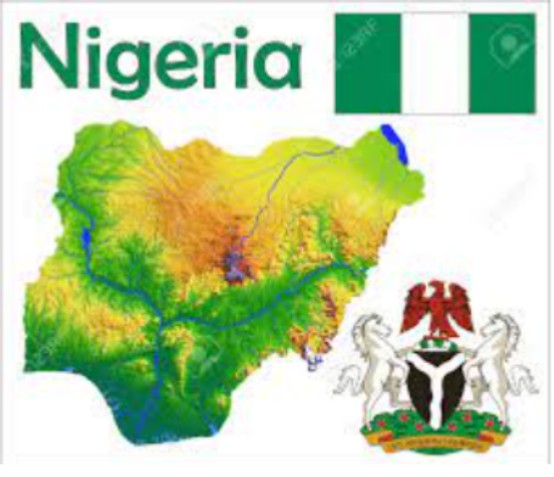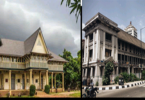The conspicuous West African nation named Nigeria is a melting pot of several ancient cultures, both big and small. Nigeria’s rich history has spanned several thousands of years of migration from diverse origins, settlement, adaptation, and the rise and fall of notable empires. It has brought many ancient nation-states with unique languages and customs together to become neighbors in the same geographical location. And of course to share resources and land – or otherwise be displaced. From the foregoing, the man-made (though seemingly unintentional) cohabitation over the centuries brought along its own set of challenges.
Neighbors surely quarreled; wars were fought; there were conquests and defeats, as well as slaves and casualties. Not surprisingly, there have been struggles by each ethnic group to preserve its identity. But the necessity to establish a sovereign, self-sustaining nation that respects the needs of all its citizens continues to be a recurrent theme. Hence we aim to dive into Nigeria’s rich history and cultural heritage. Perhaps a deeper understanding of the past triumphs and errors of this nation and its diverse tribes would be highly beneficial. It might help forge a meaningful way to properly and equitably govern it henceforth.
Nigeria’s Stone Age Dwellers
The name ‘Nigeria’ (Niger-Area) was a coinage of Flora Shaw, a British journalist in the late 19th century. The name apparently made reference to the river Niger, one the two biggest rivers that cut across the Nigerian landscape. There were also claims that the name probably suggested that the inhabitants of the area were Negro (black-skinned) people. Shaw became the wife of Frederick Lugard, who became the first Governor-General of the united Northern and Southern Protectorate of Nigeria in 1914.
Archaeological findings across West Africa (especially stone tools) provided surprising evidence of the existence of very ancient humans. Carbon-dated remains suggested that these ancient humans lived and operated as far back as over 700,000 years to the present. They were also believed to have migrated southwards from both the West Sudanian savanna, and the Sahara/Sahel regions to the North. Their likely origins to the north were traced to places like Mauritania, Senegal and as far as Egypt. They began dwelling along parts of the forests, as well as the coastal regions of West Africa between 61,000 and 25,000 years to the present. Most of them were hunter-gatherers within this period. Around 13,000 years ago, the Iwo Eleru people of Western Nigeria had already fully settled.
However, late Stone age humans using microlith tools arrived from Central Africa between 7,000 and 3,000 years ago, and displaced the Iwo Eleru settlers. Nevertheless, these early hunter-gatherers (including Iwo Eleru settlers) persisted within the forest-savanna regions till around 1,000 years ago. Many of the late West African settlers began to practice agriculture; and the remnant of the early hunter-gatherers intermixed with them. Subsequently, the hunter-gatherers had their cultures absorbed into that of the bigger agriculturist settlers from Central Africa.
Nigeria: The Iron Age People
Sometime around 1,500 years ago, iron smelting technology indigenous to West, Central and East Africa was discovered. Certain sources indicated that iron metallurgy must have occurred in Lejja (around 2631 BC to 2458 BC) and Opi (around 750 B.C). Both towns are located in one of Nigeria’s well-known southeastern towns named Nsukka. Because iron smelting furnaces and slag were found in these places, along with other key locations in the Central African Republic, Niger and Togo.
Similarly the Nok people were found to have independently developed iron smelting technology from the 9th century BC to 550 BC. Findings indicated that the Nok people (who typically dwelled on mountaintops within Kaduna, Katsina and Sokoto) likely emerged around 1,500 years BC. The Nok people were also believed to have originated the Terracotta sculptures that became a characteristic feature of later West African tribes.
Because of clear similarities in culture and art (including the terracotta), it is believed that the Nok people may have influenced the Igbo-Ukwu, Ile-Ife and Bini artistic traditions. Furthermore, the Yoruba and Jukun tribes (and perhaps the Bini kingdom) could have been the descendants of the early Nok people.
Nigeria’s History Before 1500 BC: The Rise of KIngdoms and Nation-States
In the interval between the Iron Age and around 1500 BC, the following kingdoms emerged and have formed some of the foundational tribes of Nigeria. Namely the Nri kingdom, Bini Kingdom, Borgu Kingdom, Fulani empire, Hausa Kingdoms, Kanem Bornu Empire, Kwararafa Kingdom, Ibibio Kingdom, Nupe Kingdom, Oyo Empire, Songhai Empire, Warri Kingdom, Ile-Ife Kingdom, Igala kingdom, and Yagba East Kingdom.
The Fulani Empire, Bini Kingdom, Oyo Empire, Kanem-Borno, Songhai, Warri and Ile-Ife had particularly strong influences on the development of the West African region. For instance, the religion of Islam arrived in Nigeria around 1068 AD through the Bornu Empire. Christianity also arrived in Nigeria around the 15th Century, via Portuguese monks who came through the kingdom of Warri. It was also claimed that the royal stool of the paramount ruler, Olu of Warri, was actually established by an Igala prince.
Oyo and Bini Empires
Within the same 15th Century, the Oyo and Bini empires became notably large, and stronger than that of ancient Ile-Ife. Nevertheless, the paramount ruler or Ooni of Ife retained its priesthood designation, and remained the spiritual head of Yorubaland. The ruling system of the older Ile-Ife kingdom was also adopted by the Oyo Empire. It consisted of the state council of chiefs, who appointed the ruler (in this case the Alaafin of Oyo) from among competing, ruling houses. The state council maintained a system of checks and balances in both the governance of Ile-Ife and Oyo kingdoms.
The Oyo Empire also had a well-developed system of cavalry forces, which gave them dominion over nearby kingdoms of Dahomey, Nupe and Borgu kingdoms. However, the Dahomey eventually fought back to regain their autonomy from the Oyo empire. The Bini Empire (1440–1897) were also skilled warriors with well-developed weapons of warfare. That unfortunately could not stand in the face of the British invasion of Bini Empire in 1897. The Bini empire was sacked and burnt down by the British forces. This was in retaliation for the officers that were killed for desecrating a religious rite. Furthermore, it was an advancement of the original British colonialist desire to take over the established West African trade routes and territories.
The 15th Century also witnessed a boost in the Trans-Atlantic slave trade between West Africa and Europe. It was the sour consequence of the terrible Oyo-Ijebu wars of the then southwestern Nigeria. War captives were subsequently sold off the coast of present-day Badagry (western Nigeria) to European slave traders
Songhai, Borno and Fulani Empires
In the 16th Century came the dominance of the Songhai Empire, whose control extended over Senegal, Gambia, and the Hausa states to the east. At the same time, the Saifawa dynasty of the Borno Empire took control of the Hausa states to the west, as well as Kanem. The conquest of the major West African cities of Gao, Timbuktu and the Hausa states by Moroccan forces led to the collapse of the Songhai Empire in 1591. This encouraged the Borno Empire to grow stronger, until it reached its peak under Idris Aloma between 1569 and 1600.
By the 18th century, the Borno Empire had dominated northern Nigeria. However, the Hausa states wrestled for supremacy amongst themselves and weakened the Borno Empire. Aside from this, a severe drought wreaked havoc across the savanna and Sahel regions within the Borno Empire in the mid-18th Century. At the same time, invading Tuareg tribes took control of many of the northern territories.The Borno Empire recovered temporarily in the succeeding decades; but was hit by a second wave of drought around the 1790s.
In the aftermath of the warring Hausa states and severe drought, the nomadic Fulani tribes quickly took the advantage to enter Hausaland. The Fulani fell victim to Hausa political rulers who demanded heavy taxes from them. The situation set the stage for the Jihad led by Usman Dan Fodio around the end of the 18th Century.
British Occupation of Nigeria and Independence
The trans-Atlantic slave trade of southwest Nigeria (15th Century) became the major channel through which European christian missionaries penetrated Nigeria. It also became the catalyst for the eventual arrival and control of Lagos by the British government in 1851. The British forces advanced from both the southwest and southeast Nigeria to take over the entire Nigerian landscape. And by 1901, Nigeria became a British Protectorate. Nigeria remained a British colony up until the year 1960 when a nationalist movement led to the nation’s independence. And By 1963, Nigeria attained the status of a Republic.
Nigeria’s Civil War and Military Rule
There was a general distrust and dissent against the system of governance following Nigeria’s independence. It subsequently led to the bloody coup d’etat of 1966. The events that followed saw the forming of a separatist movement calling for the sovereign state of Biafra by Odumegwu Ojukwu in 1967. It also sparked a three-year Civil War that lasted from 1967 to 1969. A brief period of restoration of civilian rule and rewriting of the nation’s Constitution took place in 1979. But yet again the military seized power in 1983. Several regimes of military rule followed up until 1998 when the incumbent, General Sanni Abacha died. This led to the establishment of the Fourth Republic, and a definite end to decades of military rule.








